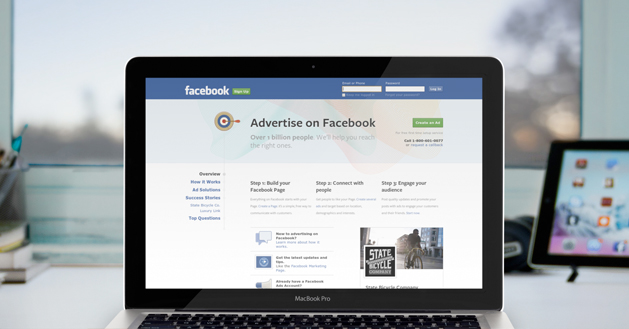5 Ways to Reduce Your Facebook Ads Cost Per Click ?
Facebook ads run on a cost per objective basis. You salary dependent
on the objective you want to complete. Website clicks and page likes are the
cheapest, while website adaptations are the most expensive. No matter what
objective you’re using, however, you want to make sure you’re giving as little
as possible per independent. Here’s how.
1. Pick the Right Objective
Facebook’s ad objectives define what
counts as a exchange for your ad. If you want to sell products, you might want to be using the
product deals objective rather than the website clicks objective. Why? Website
clicks just means you salary each time someone clicks to your website,
regardless of whether or not they ever see your products, let alone purchase.
If you run the website changes objective, you pay when a user adapts, not just
when they click. On the other hand, it costs more, so you have to stability
this with other factors.
The last thing you want to do is use
the wrong objective in a way that kills your campaign. Trying to use the video views impartial, for example, when you
don’t have a video to play will just waste time and inexpensive.
2. Use a More Compelling Image
The first thing you need to understand is that you will need a
number of different versions of each image you use, dependent on the location
and objective of the ad. Yes, even different objectives
display ads slightly differently, and this can disturb the size
of the image.
There are other ad image guidelines beyond size that you need to
identify. For one thing, pictures of happy people tend to be a good avoidance.
If you don’t know anything more specific, test pictures of smiling people,
particularly women. If you can capture them in situation that’s relevant to
your business, even well.
You should also pick images with colors that stand out from the
boring every-day color system of Facebook. This is particularly important for
sidebar ads, which tend to blend in with the blue-and-white drabness of the
rest of the page. News feed ads can be a bit less vibrant because they’re large
and existing front and midpoint.
3. Use an Appropriate Frequency
Do you know what ad frequency is? A lot of first-time marketers either don’t know or
don’t pay care.
There are three numbers that measure how your ads are viewed by
people on Facebook. Impresses are the total number of times your ad was seen.
If one person views your ad five times, that’s five impresses. Reach is the
total number of individual people who saw your ad. If one person sees your ad
five times, that’s one reach. Regularity is the number of times, on average,
that a person sees your ad. If your audience is one person, and he sees your ad
five times, you have a regularity of five.
On Facebook, you can set limits to your regularity. You should
pay attention to your regularity and adjust your budget and targeting
accordingly. You can read more about these adjustments on
AdEspres so.
4. Implement Split Testing
Every time I mention testing, watching or changing your ads, I’m
talking about split testing.
Split testing works like this: you take one ad and create an careful copy of it. You change one
thing – and only one thing – about that ad. You then run both ads for an equal
amount of time with an equal audience and an equal budget. You measure which does
better. Then you pick the better one, copy it, and run another test.
You can further complicate tests by running numerous variations
at once, though this can cause issues with classifying which of two changes is well.
Try to only test one variable at a time. For example, you can easily run six
different pictures on like ads. However, you should never run an ad that has
multiple variables changed. For example, don’t run an ad, a variant with a
different picture, and a variant with different copy. If both perform well than
the original, you don’t know which change to make.
There are all kinds of belongings
you can test when you split test variables. You can change your image by a
little or totally. You can alter your copy, your landing page link URL, or your
title. You can change your targeting options in a million ways in the back end
of the ads method.
5. Track All Data
Finally, track everything. Track data, monitor them, and make sure you’re improving in the
metrics that count.
This means, of course, that you need to take zero measurements
of such statistics for every ad and for your advertising as a whole. Figure out
how much you’re spending, what your reach is, what your incidence is, what your
targeting is and what goals you’d like to reach. Work to optimize sides of your
advertising like your conversion rate, your click-through rate and your cost
per click. Make changes that lower your CPC, but don’t go overboard. The ideal
penny-per-click isn’t really ideal at all; in fact, it mostly means your clicks are paltry.
Each change you make should be geared towards either improving
the performance of your ads or falling the cost of those ads.





Comments
Post a Comment